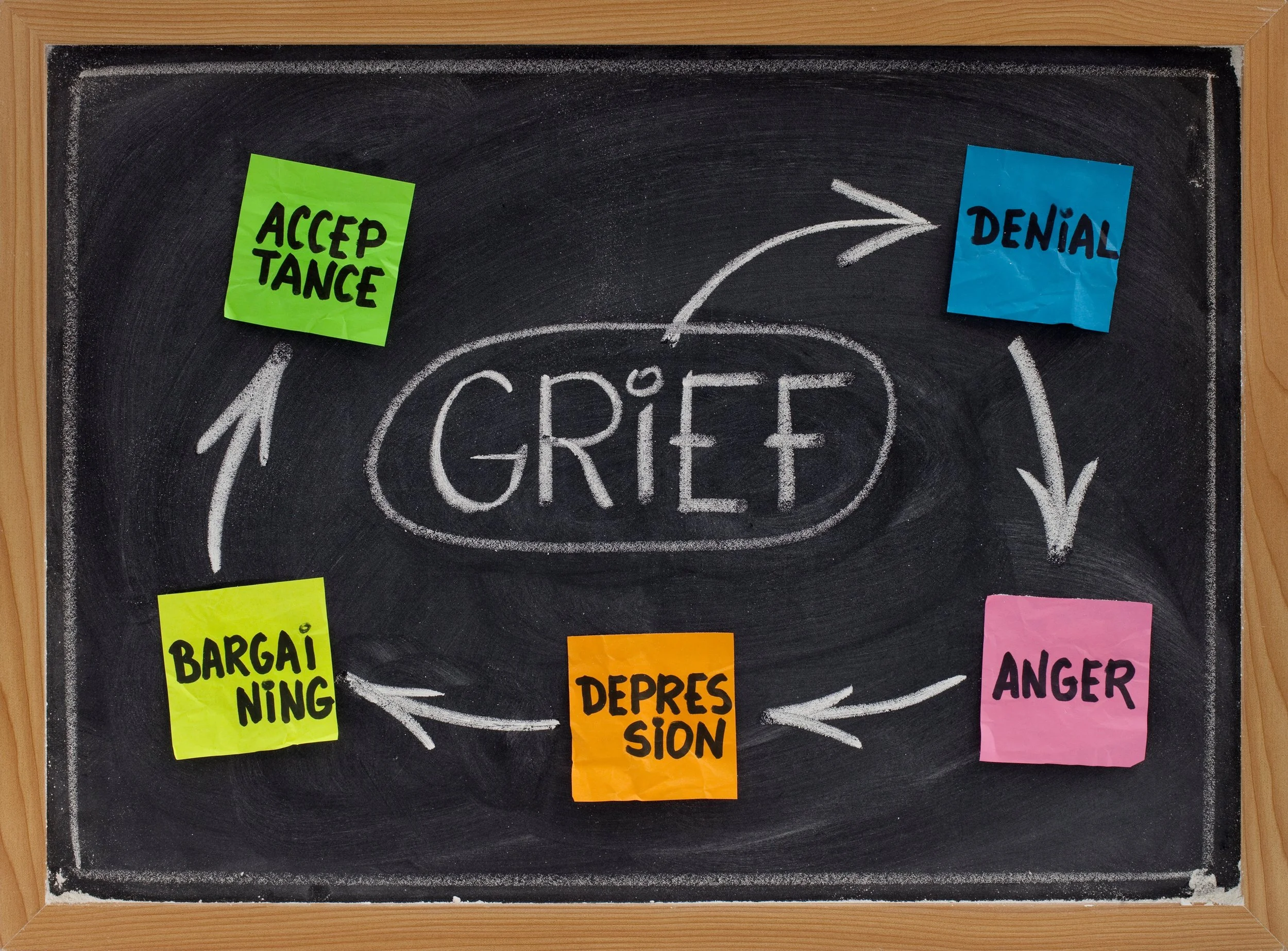
8 Practical Tips for Navigating Separation and Divorce During the Holidays
The holiday season is often portrayed as joyful and magical—but for those navigating separation or divorce, it can feel overwhelming. Traditions change, family dynamics shift, and financial stress may increase. If you’re struggling, you’re not alone. Research shows that intentional coping strategies can help you manage stress and find moments of peace during this transition.
Introduction: Why the Holidays Can Be Hard After Divorce
The holiday season is often portrayed as joyful and magical—but for those navigating separation or divorce, it can feel overwhelming. Traditions change, family dynamics shift, and financial stress may increase. If you’re struggling, you’re not alone. Research shows that intentional coping strategies can help you manage stress and find moments of peace during this transition.
In this post, we’ll explore 8 practical, research-backed tips for navigating divorce during the holidays—so you can protect your emotional health and create meaningful experiences.
1. Give Yourself Permission to Feel
It’s normal to experience a mix of emotions—sadness, anger, relief, or even guilt. Suppressing feelings often leads to more stress, while acknowledging them promotes healing.
Tip: Journal your thoughts or share them with a trusted friend. Naming your emotions reduces their intensity and helps you process them.
2. Practice Mindfulness to Stay Grounded
Mindfulness techniques like deep breathing and short meditations can calm racing thoughts and ease anxiety. Even five minutes can make a difference.
Tip: Use apps like Headspace or Calm for guided practices you can do anywhere.
3. Set Clear Boundaries Early
Boundaries protect your emotional energy and reduce conflict. Communicate holiday plans with co-parents and family ahead of time to avoid last-minute stress.
Tip: Use simple, respectful language: “I appreciate the invite, but I need to keep things low-key this year.”
4. Create New Traditions
Old traditions may feel painful right now. Research shows that creating new rituals fosters resilience and a sense of control.
Tip: Start something small—a holiday movie night, baking cookies with your kids, or volunteering together.
5. Keep Expectations Realistic
You don’t have to make the holidays “perfect.” Focus on what matters most: connection and peace.
Tip: Choose one or two meaningful activities instead of trying to do everything.
6. Manage Financial Stress
Divorce often brings financial strain, and holiday spending can add pressure.
Tip: Set a realistic budget and prioritize experiences over expensive gifts. Remember, presence matters more than presents.
7. Lean on Your Support System
Social support is a powerful buffer against stress. Reach out to friends, family, or a therapist when you need to talk.
Tip: If you feel isolated, consider joining a divorce support group—many meet virtually.
8. Take Care of Your Body
Physical health impacts emotional well-being. Regular movement, balanced meals, and adequate sleep help stabilize mood and reduce stress.
Tip: Even a short walk outside can boost your mood and energy.
Final Thoughts
Navigating separation or divorce during the holidays is challenging—but it doesn’t have to steal your joy. By setting boundaries, creating new traditions, and caring for yourself, you can make this season a time of healing and hope.
References
Amato, P. R. (2010). Research on divorce: Continuing trends and new developments. Journal of Marriage and Family, 72(3), 650–666.
Archuleta, K. L., Dale, A., & Spann, S. M. (2013). College students and financial distress: Exploring debt, financial satisfaction, and financial anxiety. Journal of Financial Counseling and Planning, 24(2), 50–62.
Kabat-Zinn, J. (2003). Mindfulness-based interventions in context: Past, present, and future. Clinical Psychology: Science and Practice, 10(2), 144–156.
Minuchin, S. (1974). Families and family therapy. Harvard University Press.
Walsh, F. (2016). Family resilience: A developmental perspective. Family Process, 55(3), 616–632.
Setting Healthy Boundaries During the Holidays : Why it matters, and how to do it without guilt.
The holidays can be a beautiful time of connection, but they can also bring stress, overstimulation, and complicated family dynamics. I find this season especially challenging because expectations seem to increase, while my personal bandwidth decreases. Can you relate?
The holidays can be a beautiful time of connection, but they can also bring stress, overstimulation, and complicated family dynamics. I find this season especially challenging because expectations seem to increase, while my personal bandwidth decreases. Can you relate?
This is exactly why the holidays are one of the most important times to set boundaries. My boundaries exist not to distance myself from the people I love, but to stay grounded, emotionally safe, and genuinely present.
Why Holiday Boundaries Matter
The holidays often come with:
packed schedules
emotional triggers
financial pressure
family expectations
social obligations
travel stress
less time for rest
Even joyful moments can feel heavy if you don’t have enough space to recover, recharge, or take care of yourself. Boundaries help you protect your energy so you can actually enjoy the parts of the season that matter to you.
A boundary is simply:
A limit that protects your well-being.
Not a rule for others, but a guideline for you.
Common Holiday Boundary Struggles
If any of these resonate, you’re not alone:
Feeling obligated to attend every event
Pressure to spend money you don’t have
Being around relatives who drain you emotionally
Comments about your body, relationship status, or life choices
Feeling guilty saying no
Old roles resurfacing (“the fixer,” “the peacemaker,” “the responsible one”)
Needing downtime but afraid to disappoint others
The holidays often activate old patterns. Boundaries help you create new ones.
How to Set Holiday Boundaries (without guilt)
1. Check in with yourself first
Before saying yes out of pressure or habit, ask:
What do I actually have the energy for?
What events matter most to me?
What am I doing out of obligation, fear, or guilt?
Clarity makes boundary setting much easier.
2. Choose what you want to protect
This might be:
your time
your finances
your emotional safety
your rest
your peace
your physical space
your kids’ boundaries
your sobriety
your healing
Your boundaries should honor and protect what matters most to you.
3. Communicate simply and clearly
Holiday boundaries don’t require long explanations.
Short, kind statements work best.
Try:
“I’m not able to attend, but thank you for inviting me.”
“We’re keeping gifts simple this year.”
“I’m stepping away for some quiet time.”
“Let’s avoid that topic today. It's sensitive for me.”
“I’m coming for two hours, then heading home to rest.”
4. Prepare for some pushback, and stay calm
When you change a pattern, others may need time to adjust. Their reaction is about their expectations, not your worth.
Healthy people respect healthy boundaries.
5. Follow through
A boundary only works when you honor it, even if it feels uncomfortable.
If you say you’re leaving by 8:00, and you leave by 8:00, you reinforce your own sense of safety and self-trust.
Holiday Boundary Scripts for Real Situations
When someone pushes you to attend an event:
“Thanks for including me. I’m keeping my schedule lighter this year, so I’m not able to come.”
When money is tight:
“We’re doing small or handmade gifts this year. Thank you for understanding.”
When a family member comments on your body or life choices:
“I’m not discussing that.”
If they continue: “If this keeps coming up, I’ll need to step out for a bit.”
When you need a break:
“I’m going to take a little quiet time. I’ll be back in a bit.”
When you want a shorter visit:
“I can come between 3 and 5.”
(Notice this is a boundary, not a negotiation.)
When alcohol will be present and you’re not drinking:
“I’m not drinking today, but I’m happy to be here with everyone.”
When family conflict arises:
“I want to enjoy our time together. I’m not engaging in arguments today.”
A Compassionate Reminder
You are not responsible for managing everyone’s emotions this holiday season.
You’re responsible for taking care of your nervous system, your energy, and your emotional well-being.
Your boundaries don’t make you difficult.
Your boundaries allow you to show up as your most grounded, present, and authentic self, and that is a gift to everyone around you.
Wicked: For Good & The Transformative Power of Relationships
I’ve now seen Wicked: For Good twice—and cried both times during the iconic “For Good” scene. That song is a masterclass in emotional depth, capturing the bittersweet reality of friendships that transform us, even when circumstances pull us apart. From a mental health standpoint, this moment resonates deeply: it reminds us that relationships can be both impermanent and profoundly impactful.
Spoiler Alert: This review contains key plot details from Wicked: For Good.
I’ve now seen Wicked: For Good twice—and cried both times during the iconic “For Good” scene. That song is a masterclass in emotional depth, capturing the bittersweet reality of friendships that transform us, even when circumstances pull us apart. From a mental health standpoint, this moment resonates deeply: it reminds us that relationships can be both impermanent and profoundly impactful.
Themes That Matter
1) Friendship Under Pressure
Elphaba and Glinda’s bond is tested by political turmoil, moral dilemmas, and personal insecurities. Their journey illustrates how friendships can thrive—even in crisis—when honesty and empathy are present. This mirrors what we often discuss in therapy: navigating conflict without losing connection.
2) The Importance of Community
The film underscores how isolation amplifies distress. Elphaba’s experience as an outsider highlights the mental health risks of stigma and exclusion. Conversely, moments of solidarity—whether through shared laughter or acts of courage—show how community fosters resilience and hope.
3) Identity and Self‑Acceptance
Elphaba’s struggle to embrace her uniqueness speaks to anyone who has felt “othered.” Her arc reminds us that authenticity often comes at a cost, but it’s essential for psychological well‑being.
4) Ambiguous Loss and Grief
The ending carries a quiet grief—not just for what’s lost, but for what could have been. This is where “For Good” hits hardest: it validates that even relationships that end can leave us stronger, wiser, and more compassionate.
Personal Reflection: Friendship, Loss, and Choosing Community
Watching Wicked: For Good reopened a tender chapter for me. My best friend from high school died suddenly at the young age of 26. The shock of losing someone who helped shape my early life left a fault line in my heart that I still feel when “For Good” swells. The lyrics—“Because I knew you, I have been changed for good”—capture the way our friends become anchors, mirrors, and catalysts. Grief doesn’t erase that imprint; it clarifies it.
That loss also changed how I show up for friendship as an adult. I value my friend circle now more than ever—not as a casual social accessory, but as a vital, life‑giving safety net. I invest more intentionally: answering the phone, scheduling the visit, saying “I love you,” apologizing promptly, and celebrating small wins. I’ve learned that community isn’t accidental; it’s built through consistent, vulnerable presence. In clinical terms, these practices strengthen attachment bonds and expand our window of tolerance—making it easier to weather stress, disagreement, and uncertainty together.
I also find solace in honoring her memory by living the best life. She was not given the same chance, and I value every moment now in a different way.
Why It Matters for Mental Health
Friendship as a Protective Factor: Strong social bonds buffer against stress and trauma; they reduce loneliness and improve emotion regulation.
Community as Healing: Belonging counters shame and stigma, and offers shared meaning in the face of loss.
Permission to Feel: The story normalizes complex emotions—love, anger, guilt, and grief—without judgment and shows that courage and compassion can coexist.
Gentle Takeaways
If a friendship is in crisis, name the strain and seek repair: truth plus tenderness.
Choose community on purpose: make plans, ritualize connection, and practice gratitude.
Let “For Good” be more than a song—make it a practice: tell your people how they’ve changed you, and how you intend to keep showing up.
Final Thoughts
Wicked: For Good isn’t just a musical—it’s a mirror reflecting our need for connection, meaning, and forgiveness. If you’ve ever navigated a friendship through crisis or wrestled with identity and belonging, this story will speak to you. And yes, if you’re like me, you might cry during “For Good”—because it’s not just a song; it’s a reminder that relationships, even imperfect ones, shape who we become and help carry us through the hardest seasons.
Mourning
In graduate school I learned about the stages of grief and loss by Kubler-Ross. These are not frequently known to the general public. In the United States, we typically do not accept the idea of loss well. We protest when our political candidates lose. When we lose we protest the conditions of the lost. Rather, we embrace denial with an almost salient delusion of grandeur: this cannot happen to me!
Trigger Warning: Mentions of Death, Dying, and Suicide.
In graduate school I learned about the stages of grief and loss by Kubler-Ross. These are not frequently known to the general public. In the United States, we typically do not accept the idea of loss well. We protest when our political candidates lose. When we lose we protest the conditions of the lost. Rather, we embrace denial with an almost salient delusion of grandeur: this cannot happen to me!
Mourning is a difficult business. We have a Lincoln Memorial, however the memorializing gets dwarfed by the monument. We have gravestones in cemeteries, yet little actions to process the actual grief get performed. Mourning needs to be planful, intentional, and meaningful.
My first serious brush with death was when a friend of mine: Spc. Kristopher died in Taji, Iraq while serving with the 10th Cavalry. Upon hearing the news, my grandfather told me: “Let’s light a candle for him.” My late grandfather was a USAF Staff Sergeant who served stateside in the Korean Conflict. His act of mourning at the funeral was to salute the closed casket.
When my grandfather passed, my acts of mourning were light a candle, and enjoy some southern comfort food. I lost count of how many orders of biscuits and gravy and chicken fried steaks I consumed in 2022. For me the foods he loved to eat, and share in those morsels of flavor or ‘gravy trains’ of flavor was an avenue to embrace mourning.
Today, on 12.02.2025, I learned Pastor David Bucknam, MA, MDiv, LCPC passed. Dave was one of my favorite colleagues at The Antioch Group Incorporated. Dave was a individual who left a valuable and lasting legacy for all he came into contact with! Dave was a dual citizen of the United States and the Dominion of Canada. To engage in mourning his passing I drank a Tim Horton’s Medium Roast in my keurig instead of my standard Green Mountain/Starbucks/Lavazza rotation.
Mourning is an action. It is a part of life that frequently we do not wish to visit. Like Sassoon’s poem: “No one spoke of him again.” Instead, we need to take into consideration the following words: “Do this in remembrance of me.” That was on my church’s altar as a little boy. We just experienced the month of November, fall is ending, winter’s arrival is premature in Peoria with the ice storms and snow. The Polish people call November: Listopada. Listopada means the falling of the leaves. Watch the leaves fall, and think of them.
Breadcrumbing: The Silent Strain on Mental Health in Modern Relationships
Breadcrumbing refers to giving someone intermittent, non-committal attention—just enough to keep them engaged—without any genuine intention of deepening the relationship. This behavior often manifests through sporadic texts, likes on social media, or vague promises of future plans that never materialize. While commonly associated with romantic relationships, breadcrumbing can also occur in friendships, creating confusion and emotional distress across relational contexts.
What Is Breadcrumbing?
Breadcrumbing refers to giving someone intermittent, non-committal attention—just enough to keep them engaged—without any genuine intention of deepening the relationship. This behavior often manifests through sporadic texts, likes on social media, or vague promises of future plans that never materialize. While commonly associated with romantic relationships, breadcrumbing can also occur in friendships, creating confusion and emotional distress across relational contexts.
Psychologically, breadcrumbing operates on the principle of intermittent reinforcement, which explains why unpredictable attention keeps individuals hooked, hoping for more, even as the relationship remains stagnant (Tokunaga, 2016). This dynamic fosters insecurity, erodes trust, and perpetuates cycles of hope and disappointment.
Identifying Breadcrumbing in Romantic Relationships
In romantic contexts, breadcrumbing often looks like:
Inconsistent communication: Days of silence followed by casual check-ins like “Hey, stranger.”
False promises: Talking about future plans that never happen.
Minimal effort: Engaging just enough to maintain interest without progressing toward commitment.
Research shows that breadcrumbing correlates with lower life satisfaction, increased loneliness, and feelings of helplessness among adults who experience it regularly (Papp & Erchull, 2021; LeFebvre, 2018).
Breadcrumbing in Friendships
Breadcrumbing isn’t confined to dating. In friendships, it may appear as:
Surface-level engagement: Occasional likes or comments on social media without meaningful interaction.
Empty invitations: Suggesting plans but never following through.
Emotional inconsistency: Offering support sporadically, then disappearing when needed most.
This pattern can be particularly harmful because friendships are often a primary source of emotional support. When that support becomes unreliable, individuals may experience heightened anxiety and diminished trust in social connections (Navarro & Villora, 2021).
The Mental Health Impact
Breadcrumbing is not just frustrating—it’s psychologically harmful. Studies indicate that exposure to breadcrumbing is associated with:
Anxiety and emotional insecurity: The uncertainty of where one stands breeds chronic stress (Navarro et al., 2020).
Low self-esteem: Sporadic attention reinforces feelings of inadequacy and self-doubt (Villora et al., 2019).
Loneliness and helplessness: Victims report diminished life satisfaction and increased isolation (Papp & Erchull, 2021).
Paranoid ideation: In severe cases, breadcrumbing can erode perceived social support, contributing to mistrust and paranoia (Navarro & Villora, 2021).
The cumulative effect of breadcrumbing, ghosting, and similar behaviors can impair coping mechanisms and increase vulnerability to revictimization, particularly among younger adults (LeFebvre, 2018).
Adding Perspective: Breadcrumbing Isn’t Always Malicious
It’s important to note that breadcrumbing is not always intentional or meant to cause harm. Sometimes, people breadcrumb because they are unsure of what they want, overwhelmed, or lack the emotional capacity for deeper engagement. In these cases, the behavior reflects their limitations rather than deliberate manipulation.
However, if you have clearly expressed your needs and expectations and the pattern continues without meaningful change, it becomes a signal to reassess. At that point, you need to decide:
How much energy and emotional investment you want to give this relationship.
Whether the dynamic aligns with your values and mental health needs.
Setting boundaries and prioritizing your well-being is essential—even when the other person’s intent isn’t malicious.
Why Does Breadcrumbing Happen?
Motivations behind breadcrumbing often include:
Fear of commitment.
Desire for attention without responsibility.
Emotional unavailability.
Power and control dynamics (Papp & Erchull, 2021).
Understanding these drivers is essential for recognizing that breadcrumbing reflects the breadcrumber’s limitations—not the recipient’s worth.
Breaking the Cycle
If you suspect you’re being breadcrumbed:
Recognize the signs: Inconsistent communication and vague promises are red flags.
Set boundaries: Communicate your needs clearly and enforce limits.
Prioritize self-worth: Seek relationships that offer consistency and mutual respect.
Access support: Therapy can help rebuild self-esteem and develop strategies for healthier connections.
Final Thoughts
Breadcrumbing may seem trivial in a world of casual connections, but its psychological toll is real. Whether in dating or friendships, this pattern undermines emotional security and mental well-being. By naming and addressing breadcrumbing, we empower individuals to reclaim their time, energy, and sense of worth.
References
LeFebvre, L. E. (2018). Ghosting and breadcrumbing in emerging adulthood: Digital dating behaviors and mental health. Journal of Social and Personal Relationships, 35(9), 1251–1279. https://doi.org/10.1177/0265407517704090
Navarro, R., Larrañaga, E., Yubero, S., & Villora, B. (2020). Psychological impact of cyber dating abuse: The role of emotional abuse and control. Computers in Human Behavior, 104, 106–112. https://doi.org/10.1016/j.chb.2019.106112
Navarro, R., & Villora, B. (2021). Cyber relational abuse and mental health: A systematic review. Aggression and Violent Behavior, 58, 101–108. https://doi.org/10.1016/j.avb.2021.101108
Papp, L. M., & Erchull, M. J. (2021). Ghosting and breadcrumbing: Prevalence and psychological correlates. Journal of Social and Personal Relationships, 38(9), 2637–2658. https://doi.org/10.1177/02654075211017043
Tokunaga, R. S. (2016). Intermittent reinforcement and relational uncertainty in digital communication. Communication Research, 43(4), 543–564. https://doi.org/10.1177/0093650214565920
Villora, B., Navarro, R., & Yubero, S. (2019). Cyber dating abuse: Prevalence and association with psychological adjustment. International Journal of Environmental Research and Public Health, 16(22), 4338. https://doi.org/10.3390/ijerph16224338
You Deserve More Than 50 Minutes
Most people think of therapy as a weekly 50-minute appointment, a slow and steady process that unfolds over months. For some, that pace works well. But if you’re like me and cringe at the saying “Good things come to those who wait,” you might find yourself wishing for something more immediate, more immersive, and more impactful. That’s where therapy intensives come in.
Most people think of therapy as a weekly 50-minute appointment, a slow and steady process that unfolds over months. For some, that pace works well. But if you’re like me and cringe at the saying “Good things come to those who wait,” you might find yourself wishing for something more immediate, more immersive, and more impactful. That’s where therapy intensives come in.
Therapy intensives are designed for people who want to accelerate their progress. Instead of spreading sessions across weeks, intensives allow you to meet with your therapist for extended blocks of time—sometimes a full day or even several consecutive days. Imagine the difference: you could meet for three hours once a week for several months, or you could meet for six hours a day over three days. Both options give you about 18 hours of therapy, but one compresses months of work into a single weekend. That’s the power of an intensive.
Traditional therapy often feels like it takes most of the hour just to settle in—catching up on the week, easing into the conversation—before finally reaching a breakthrough. And then, just as you’re getting somewhere meaningful, the clock runs out and you hear, “We’ll pick this up next week.” With an intensive, you don’t have to stop at the pivotal moment. You have the time and space to go deeper, to explore what’s really holding you back, and to make meaningful progress without interruption.
Put it into perspective: a three-day intensive with six hours of therapy each day equals 18 hours of focused work. That’s roughly the same as four months of weekly sessions. If you scheduled one intensive every four months, you’d match the therapy hours of an entire year of traditional sessions. For many people, that’s a game-changer.
Research backs this up. Studies show that condensed therapy formats can be just as effective as traditional weekly sessions—and sometimes even more so. Intensive EMDR and exposure-based therapies have demonstrated rapid symptom reduction for trauma and PTSD. Couples who participate in immersive Gottman Method intensives often report significant improvements in communication and relationship satisfaction. Longer, uninterrupted sessions allow for deeper emotional processing and reduce the risk of dropping out, making therapy more accessible for people with busy schedules or those traveling from out of town.
Therapy intensives are ideal for individuals who want to jump-start trauma resolution or for couples ready to strengthen their connection and heal relational wounds. They’re also a great fit for working professionals with limited time off or anyone who prefers a focused, goal-driven approach. Intensives are not recommended for couples in crisis or those still deciding whether to remain together, but for those committed to growth, they offer a unique opportunity to make progress quickly and effectively.
Imagine accomplishing in three days what might otherwise take months. Imagine stepping away from distractions and immersing yourself in the work that matters most. That’s what therapy intensives offer—a chance to supercharge your healing journey and move toward the life and relationships you deserve.
If you’re ready to experience the difference, Summit Family Therapy offers custom intensives tailored to your needs. Learn more at https://summitfamilytherapy.com/trailheadintensives.
References
Foa, E. B., McLean, C. P., Zang, Y., Rosenfield, D., Yadin, E., Yarvis, J. S., ... & Peterson, A. L. (2018). Effect of prolonged exposure therapy delivered over 2 weeks vs 8 weeks vs present-centered therapy on PTSD symptom severity in military personnel: A randomized clinical trial. JAMA Psychiatry, 75(2), 139–148. https://doi.org/10.1001/jamapsychiatry.2017.4249
Shapiro, F. (2001). Eye movement desensitization and reprocessing: Basic principles, protocols, and procedures (2nd ed.). Guilford Press.
Gottman, J., & Gottman, J. S. (2015). 10 principles for doing effective couples therapy. W. W. Norton & Company.
Markowitz, J. C., Petkova, E., Neria, Y., Van Meter, P. E., Zhao, Y., Hembree, E., ... & Marshall, R. D. (2015). Is exposure necessary? A randomized clinical trial of interpersonal psychotherapy for PTSD. American Journal of Psychiatry, 172(5), 430–440. https://doi.org/10.1176/appi.ajp.2014.14070908
Greenberg, L. S., & Watson, J. C. (2006). Emotion-focused therapy for depression. American Psychological Association.
The Clock & The Calendar
These are not real names of clients. These are fictional characters rooted in source material from this author’s varied careers in his life before becoming a psychotherapist.
Patrick couldn't stay any longer. With crops to harvest and with matters busy at home, he no longer had time for the Roscoe Stetson Card & Hunt Club that operated outside of Roscoe's old family cabin. Patrick now had a wife and child. Patrick now had responsibilities. Texas Hold Em was now a Hold Up.
Author’s Note: These are not real names of clients. These are fictional characters rooted in source material from this author’s varied careers in his life before becoming a psychotherapist.
Patrick couldn't stay any longer. With crops to harvest and with matters busy at home, he no longer had time for the Roscoe Stetson Card & Hunt Club that operated outside of Roscoe's old family cabin. Patrick now had a wife and child. Patrick now had responsibilities. Texas Hold Em was now a Hold Up.
Jayne couldn't stand her anymore. She whined. The past years of high school cheer and the dance team were gone. She couldn't bear to hear what her old friend had to say. They were now night and day different. She needed to guard her time. People depended on her as the CFO for the farm. There was no more cheer. Her old friend that she was lifted high on the pyramid by no longer held her up.
Bert couldn’t stand it. His organic farming operation, his timeshare in Florida, and his new hybrid vehicle were all collecting greenbacks. The APR on his credit card to finance the hybrid and the timeshare was not an ally at this time. His back up against the wall. His grandfather, if he still were alive would have said the following to him. “Bertie, you can’t go down every road you see. Otherwise, your never gon to get anywhere.” Bert found himself scratching his head as he looked at his bank account app…wondering how he got here.
These are twenty-first century stories of how things change. Frequently we fail to see that when seasons change we must adapt to what we value not what we used to value. Both David, the Psalmist, and the 1960s rock group the Byrds understood this concept well. We come across points where we need to change how we view both the clock and the calendar differently and our dollars differently.
Our decisions reflect our values…what motivates us to success or failure tends to be guided by values. If compassion is a value you have, then compassion is likely to motivate you to go on a humanitarian journey or mission trip to a foreign country where a natural disaster has taken place to provide relief for the effected place and people. If you value family, maybe just being back to your house for dinner before 6pm is a priority. If you value quality, you’re going to be an intentional planner and worker. You’ll be following plans you made closely and you’ll have an ownership on everything you do. If you value faith, you’ll be spending time in prayer and connecting with the Word.
It all has logic, doesn’t it. If you value something, you’ll do it, you’ll chose it. However, in our world of 2025 we tend to get distracted by all sorts of things. Scrolling on our smartphones there’s an advertisement for everything. A distraction for every adult and child on demand. However, these distractions are just free dopamine: a neurotransmitter. Dopamine is a pleasure chemical we get when we engage in certain behaviors. Unfortunately, dopamine has an appeal that we misplace as a priority rather than what we value. Consider those three folks I mentioned at the start of this piece.
Jayne, Bert, and Patrick were all facing different priorities. The old priorities of their past though weren’t going to make it with what they valued currently. A friend of mine is 92 years old. He has written likely 1,000,000 words in his life in various journals, professional magazines, he is a medical doctor by training. He valued preserving and at times saving people’s lives. His life has been a joy filled one as he remained rooted in his values.
Jayne’s old friend, Patrick’s cardsharking, and Bert’s spending were not in alignment with their new values. A pal of mine once said it best: “Hobbies migrate and priorities change as we age.” The reality of this situation is that frequently we must audit what we prioritize to discover if the clock and the calendar are ruling us. If that is the case, we must change our priorities, re-actualize our values, so we manage the clock and the calendar for our best interest and the best interest of our families.
The Gottman Concept of 6 Magic Hours: How Six Hours a Week Can Transform Your Relationship
Renowned relationship researcher Dr. John Gottman discovered that the difference between couples who thrive and those who struggle isn’t grand gestures—it’s six intentional hours per week spent nurturing the relationship. This concept, often called the “6 Magic Hours,” is grounded in decades of empirical research on marital stability and the Sound Relationship House Theory.
Renowned relationship researcher Dr. John Gottman discovered that the difference between couples who thrive and those who struggle isn’t grand gestures—it’s six intentional hours per week spent nurturing the relationship. This concept, often called the “6 Magic Hours,” is grounded in decades of empirical research on marital stability and the Sound Relationship House Theory.
What Are the 6 Magic Hours?
Gottman’s research revealed that couples who improved their relationships after attending workshops weren’t making dramatic changes—they were simply devoting an extra six hours per week to connection. These hours are broken down into small, manageable rituals:
1. Partings (10 minutes/week)
Before saying goodbye in the morning, learn one thing about your partner’s day—such as a meeting or lunch plan. This builds emotional awareness and connection.
2. Reunions (1 hour 40 minutes/week)
End the day with a six-second kiss and a 20-minute stress-reducing conversation. This ritual helps partners transition from work stress to home life and fosters empathy.
3. Appreciation & Admiration (35 minutes/week)
Express gratitude daily. Gottman recommends an admiration journal to record positive traits and actions, which strengthens the “culture of appreciation” in the relationship.
4. Affection (35 minutes/week)
Non-sexual physical affection—like cuddling or holding hands—reinforces emotional and physical intimacy.
5. Weekly Date (2 hours/week)
Dedicate time for fun and novelty without distractions. This could be a walk, dinner, or tech-free evening.
6. State of the Union Meeting (1 hour/week)
This is a weekly one-hour check-in where couples calmly discuss their relationship in a structured, positive way. It starts with sharing appreciation, then moves to addressing concerns using “I” statements, problem-solving together, and planning for the week ahead. The goal is to prevent conflict buildup, strengthen emotional intimacy, and maintain open communication. Research shows that this ritual reduces stress and improves relationship satisfaction by creating a safe space for connection.
Why It Works: The Research Behind It
The Gottman Method is supported by over four decades of longitudinal studies on couples. Findings show that consistent micro-moments of connection—rather than occasional grand gestures—predict relationship satisfaction and resilience against stress. Outcome studies confirm that Gottman-based interventions improve intimacy, trust, and conflict management across diverse populations.
Practical Tips to Implement the 6 Magic Hours
Schedule these rituals into your calendar.
Start small—focus on partings and reunions first.
Use tech-free zones during these moments for full presence.
Reflect weekly on what worked and what needs adjustment.
The Gottman 6 Magic Hours offer a simple, research-backed way to strengthen your relationship without overwhelming your schedule. By dedicating just six intentional hours each week to meaningful rituals—like daily partings, reunions, appreciation, affection, a weekly date, and a State of the Union meeting—you can build trust, intimacy, and resilience. These small, consistent actions create lasting connection and help prevent conflict before it starts. Ready to transform your relationship? Start your 6 Magic Hours today and experience the difference.
Barriers to Mental Health Treatment for Autistic Clients: What Therapists Typically Get Wrong About Autism
Despite increasing awareness of autism spectrum disorder (ASD), significant barriers persist in mental health treatment for autistic clients. Many therapists lack adequate training and knowledge about autism, leading to misinterpretations and ineffective interventions. This post addresss recent research and clinical insights to highlight common pitfalls in therapy for autistic individuals and offers evidence-based recommendations for improvement.
Despite increasing awareness of autism spectrum disorder (ASD), significant barriers persist in mental health treatment for autistic clients. Many therapists lack adequate training and knowledge about autism, leading to misinterpretations and ineffective interventions. This post addresss recent research and clinical insights to highlight common pitfalls in therapy for autistic individuals and offers evidence-based recommendations for improvement.
Insufficient Training and Knowledge Among Therapists
Research consistently demonstrates that most mental health professionals receive minimal formal education on autism. For example, Lipinski et al. (2021) surveyed 498 psychotherapists in Germany and found that only 2% reported being highly knowledgeable about autism, while 53% had very little autism-specific psychotherapeutic training. Furthermore, 27% did not know where to seek support when working with autistic clients. Notably, education about ADHD was similarly lacking.
A Canadian study by Gallant et al. (2023) surveyed 577 community mental health clinicians and found that clinicians felt significantly less knowledgeable and confident supporting autistic clients compared to those with ADHD. While some treatment adaptations such as increased structure, predictability, shortened sessions, and the use of special interests were implemented, these often occurred without formal training. Other shortcomings included reduced confidence in listening to autistic concerns, issues with demonstrating empathy towards clients, difficulty in applying mental health knowledge, and struggles with effectively utilizing interventions.
Harmful Misinterpretations in Therapy
Therapists may inadvertently harm autistic clients by applying neurotypical frameworks to interpret autistic behaviors. Jones (2024) outlines several common misinterpretations:
Labeling needs for consistency or justice sensitivity as manipulative or narcissistic
Mischaracterizing meltdowns as tantrums
Interpreting alexithymia and executive functioning challenges as resistance or denial
Dismissing pattern recognition and anticipatory dread as magical thinking or OCD
Viewing sensory sensitivities as histrionic or emotionally stunted
Seeing shutdowns or overwhelm as refusal or sulking
Labeling stimming as anxiety
Attributing the realities of neurodivergence to victim mentality or self-pity
Misdiagnosing black-and-white thinking as borderline personality disorder
Calling sensitivity to internal bodily experiences hypochondria
Mistaking autistic burnout for chronic depression
Writing off irritability due to sensory hyposensitivities as a negative mindset or anger issues
Such misinterpretations can lead to inappropriate interventions and reinforce stigma.
Systemic Issues and the Impact of Masking
Therapeutic approaches that place responsibility solely on the client such as framing the autistic individual as the "problem" fail to address systemic barriers. This can result in autistic clients feeling responsible for others' emotions, which in turn, perpetuates overthinking and isolation. Minimizing or denying the reality of being autistic (e.g., "You're too smart/social/successful to be autistic" or "Everyone is a bit autistic") further invalidates clients' experiences.
Encouraging masking or "pushing through" behaviors can suppress regulatory behaviors like stimming and necessary self-care, leading to burnout, depression, and increased suicidality (Jones, 2024). Therapists must recognize the dangers of masking and support authentic self-expression.
Recommendations for Practice
To improve outcomes for autistic clients, therapists should:
Pursue specialized training in autism and neurodiversity
Adapt sessions for structure, predictability, and sensory needs
Use concrete language and capitalize on clients' strengths and interests
Involve family and support systems in therapy
Avoid neurotypical assumptions and validate autistic experiences
Recognize and address systemic barriers, not just individual challenges
Conclusion
Addressing barriers to mental health treatment for autistic clients requires systemic change in therapist education, clinical practice, and societal attitudes. By integrating research-based adaptations and fostering genuine understanding, therapists can provide more effective and empathetic care.
References
Gallant, C., Roudbarani, F., Ibrahim, A., et al. (2023). Clinician Knowledge, Confidence, and Treatment Practices in Their Provision of Psychotherapy to Autistic Youth and Youth with ADHD. Journal of Autism and Developmental Disorders, 53, 4214–4228. https://doi.org/10.1007/s10803-022-05722-9
Jones, S. (2024). The Autistic Survival Guide to Therapy. Jessica Kingsley Publishers
Lipinski, S., Boegl, K., Blanke, E. S., Suenkel, U., & Dziobek, I. (2021). A blind spot in mental healthcare? Psychotherapists lack education and expertise for the support of adults on the autism spectrum. Autism, 26(6), 1509-1521. https://doi.org/10.1177/13623613211057973
Honoring Our Grief & Loss
Grief is not about the absence of someone. Grief and sorrow are about all the moments that were and what could have been that gather like storm clouds - the endless possibilities. Grief is the waves that crash over us - unrelenting in the first moments - taking us under into the darkness with no direction. The waves can reduce their intensity and shape but can awaken at the most unexpected moments. These moments are often described as a dull ache, losing our breath, or falling suddenly.
The Waves
Grief is not about the absence of someone. Grief and sorrow are about all the moments that were and what could have been that gather like storm clouds - the endless possibilities. Grief is the waves that crash over us - unrelenting in the first moments - taking us under into the darkness with no direction. The waves can reduce their intensity and shape but can awaken at the most unexpected moments. These moments are often described as a dull ache, losing our breath, or falling suddenly.
Joan Didion stated in The Year of Magical Thinking, “[g]rief is different. Grief has no distance. Grief comes in waves, paroxysms, sudden apprehension that weaken the knees and blind the eyes and obliterate the dailiness of life. Virtually everyone who has ever experienced grief mentions this phenomenon of “waves.”
The Tangle that Is the Grief Journey
We were taught that our grief journey progresses with Elisabeth Kübler-Ross’s Five Stages of Grief: denial, anger, bargaining, depression, acceptance (The Five Stages of Mourning by Kubler Ross). Instead, we must consider that our grief journey cannot be found in a simple straight line from point A to point B - pain to peace - as much as we would want this. Grief comes with twists and turns that may feel like we take one step forward and 10 steps back - much like the image below. Grief is an essay, not a multiple choice answer, because the journey is deeply personal - only our own. We would not want it any other way.
Strength in our Words
Take a moment to pull apart the emotions that are enclosed in the waves because they could be more than sadness. It takes strength and courage to take our emotions out of the box to reflect and consider before placing them back in the box. Without this process, we could lose ourselves in the grief. A Chinese proverb states that “you cannot prevent the birds of sorrow from flying over your head, but you can prevent them from building nests in your hair.”
We want to prevent the “nest” in our hair by taking the first small step to hold our grief gently and carefully - speaking and sharing into existence in a safe space. Our words can become the buoy that can hold us together in the storm. Our tears can bear witness to our love and loss. In time, you can even recognize and anticipate the waves - our triggers - waiting around the bend. Our words matter. Our words are powerful. Our memories give us strength to hold the photographs, visit the cemetery, acknowledge the birthdays, wrap the holiday presents, and hug those present in our lives who also walk in a similar path because they also are navigating their own storm.
“You were merely wishing for the end of pain, the monster said. Your own pain. An end to how it isolated you. It is the most human wish of all.”
― Patrick Ness, A Monster Calls
You Are Not Alone
Grief isolates. The waves pull us out far into the sea where all sound is muffled except for the crashing of the waves. Light only shines sporadically. We are pulled under and panic to reach for something or someone to hold us up. Our thoughts in these moments are not truthful.
You do not have to navigate grief alone.
What can help?
Communication with family and friends
Quiet, safe spaces to breathe
Crying
Being present for the activities that bring us joy
Journaling
Asking questions for clarification of what happened
Building a network of support - at home, at work, at school
Consider speaking to a counselor
Be honest with yourself and others
Recognize all the other losses that occur with one loss (losing community due to moving, job loss, loss of friendship, etc)
Resources
Association for Death Education and Counseling - http://www.adec.org/adec/default.aspx
Center for Loss & Life Transition - https://www.centerforloss.com/
Helping Teens Work Through Grief, Second Edition - Mary Kelly Perschy
Teen Grief : Coping with the Loss of a Loved One – Hospice of the Valley - https://www.hov.org/media/1555/teengrief.pdf
The Dougy Center: The National Center for Grieving Children and Families - http://www.dougy.org/
Summit Family Therapy Wins Best Counseling Center in Peoria!
We are excited to announce that Summit Family Therapy, a leading provider of mental health counseling in Peoria, Illinois, has been honored with the Official 2025 Community Choice Award for Best Counseling Center! This recognition reflects our dedication to delivering compassionate, evidence-based therapy services for individuals, couples, and families.
We are excited to announce that Summit Family Therapy, a leading provider of mental health counseling in Peoria, Illinois, has been honored with the Official 2025 Community Choice Award for Best Counseling Center! This recognition reflects our dedication to delivering compassionate, evidence-based therapy services for individuals, couples, and families.
Why This Award Matters
Mental health is essential for overall well-being, and this award highlights the importance of accessible, high-quality care. At Summit Family Therapy, our mission is to create a safe, supportive environment where clients can heal, grow, and thrive. Whether you’re seeking anxiety counseling, family therapy, or relationship support, we are here to help.
Our Commitment to Peoria and Beyond
As a trusted Peoria counseling center, we believe in breaking the stigma around mental health and empowering our community. This award is a testament to the hard work of our dedicated therapists and the trust of our clients.
Thank You for Your Support
We couldn’t have achieved this without YOU—our clients, partners, and supporters. Your encouragement inspires us to keep raising the bar for mental health care.






Understanding Emotional Affairs: Dynamics, Risks, and Recovery
Emotional affairs are one of the most overlooked threats to relationship health. While they don’t involve physical intimacy, they can be just as damaging—sometimes even more so. In today’s digital world, where social media and constant connectivity blur boundaries, emotional infidelity is becoming increasingly common. If you’ve ever wondered what an emotional affair is, why it happens, and how to protect your relationship, this article will give you the answers. We’ll explore the psychology behind emotional affairs, their impact on trust and intimacy, and practical strategies for prevention and healing.
Emotional affairs are intimate, non-physical relationships that cross boundaries of trust within committed partnerships. While they lack sexual involvement, emotional affairs often involve secrecy, emotional intimacy, and a diversion of relational energy away from the primary relationship. In today’s digital age, constant connectivity blurs the lines between friendship and intimacy, making emotional affairs increasingly common. Unlike platonic friendships, these relationships typically involve a level of closeness that rivals or surpasses that of the committed partner, often accompanied by secrecy and idealization (Glass & Wright, 1992). This dynamic can erode trust and destabilize the foundation of a committed relationship, even without physical contact.
An emotional affair is characterized by emotional intimacy, secrecy, and boundary violations. Individuals share personal thoughts, feelings, and vulnerabilities that are usually reserved for their partner, while concealing the depth of the relationship. Emotional energy is redirected away from the primary relationship toward another person (Olson et al., 2012). Although sexual infidelity is often viewed as more severe, research indicates that emotional betrayal can be equally damaging to relationship satisfaction and trust (Whisman et al., 2007).
Several psychological factors contribute to emotional affairs. Unmet emotional needs within the primary relationship often lead individuals to seek validation elsewhere. Opportunity and accessibility through social media and workplace interactions create environments conducive to emotional closeness (Cravens et al., 2013). Idealization also plays a role, as individuals project ideal qualities onto the other person, creating a sense of escape from relational stressors. These dynamics can result in significant consequences, including erosion of trust, decreased intimacy, and heightened conflict when the affair is discovered (Glass, 2003).
Preventing emotional affairs requires proactive strategies. Couples should establish clear boundaries about what constitutes appropriate emotional sharing outside the relationship. Enhancing communication about emotional needs and expectations fosters transparency and reduces secrecy. If an emotional affair occurs, rebuilding trust through accountability and consistent behavior is essential. Professional support, such as couples therapy, can help address underlying issues and restore relational health (Gottman & Silver, 2015).
Emotional affairs challenge the integrity of committed relationships by diverting emotional intimacy and trust. Recognizing the signs, understanding the psychological dynamics, and implementing proactive strategies can help couples protect and strengthen their bond.
Are you concerned about how your relationships are impacting your primary relationship? Or are you worried your partner is having an emotional affair?
Emotional affairs can quietly erode trust and intimacy, leaving couples feeling disconnected and betrayed. The good news? Awareness and proactive communication can prevent these situations before they start. By setting clear boundaries, prioritizing emotional needs within your relationship, and seeking professional support when necessary, couples can strengthen their bond and protect their partnership. If you suspect an emotional affair or want to learn more about rebuilding trust, consider reaching out to a licensed therapist. At Summit Family Therapy, we specialize in helping individuals and couples navigate these challenges and create healthier, more fulfilling relationships.






















